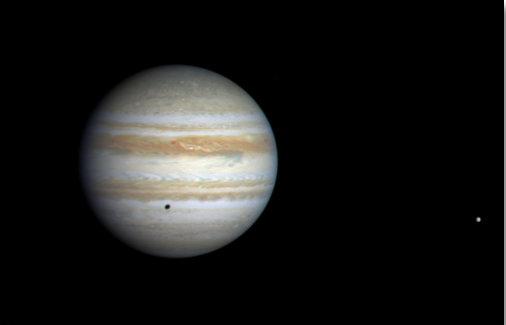First Color Image

| PIA Number | PIA02972 |
|---|---|
| Language |
|
This color image of Jupiter was taken by the camera onboard NASA's Cassini
spacecraft when it was 81.3 million kilometers (50.5 million miles) from
the planet. It is composed of images taken in the blue, green, and red
regions of the spectrum and is therefore close to the true color of
Jupiter that one would see through an Earth-based telescope.
The image is remarkably similar to images taken by NASA's Voyager 1 and 2
spacecraft more than 21 years ago, illustrating the stability of Jupiter's
weather patterns. The parallel dark and bright bands and many other
large-scale features are quasi-permanent structures that survive despite
the intense small-scale activity ongoing in the atmosphere. The longevity
of the large-scale features is an intrinsic property of the atmospheric
flows on a gaseous planet such as Jupiter, with no solid surface. Smaller
features, such as those in the dark bands north and south of the equator,
are observed to form and disappear in a few days.
Everything visible on the planet is a cloud. Unlike Earth, where only
water condenses to form clouds, Jupiter has several cloud-forming
substances in its atmosphere. The updrafts and downdrafts bring different
mixtures of these substances up from below, leading to clouds of different
colors. The bluish features just north of the equator are regions of
reduced cloud cover, similar to the place where the Galileo atmospheric
probe entered in 1995. They are called "hot spots" because the reduced
cloud cover allows heat to escape from warmer, deeper levels in the
atmosphere.
Jupiter's moon Europa is seen at the right, casting a shadow on the
planet. Scientists believe Europa holds promise of a liquid ocean beneath
its surface.
Cassini is a cooperative project of NASA, the European Space Agency and
the Italian Space Agency. The Jet Propulsion Laboratory, a division of the
California Institute of Technology in Pasadena, Calif., manages the
Cassini mission for NASA's Office of Space Science, Washington, D.C.
Credit: NASA/JPL/University of Arizona, (PIA02972)
For higher resolution, click here.
